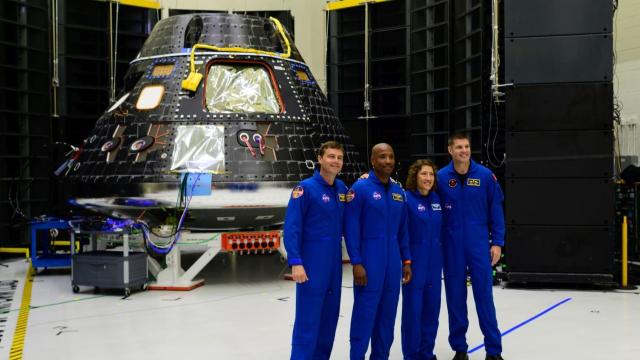NASA is dealing with a host of safety and technical issues related to the spacecraft that will fly astronauts to the Moon, forcing it to postpone two Artemis missions as it tries to resolve a number of logistical challenges.
During a press conference on Tuesday, NASA announced that it is now targeting September 2025 for the launch of its Artemis 2 mission (which was originally scheduled for November 2024) and subsequently delaying a crewed landing on the Moon to September 2026 for the Artemis 3 mission (which was originally scheduled for late 2025).
“As we prepare to send our friends and colleagues on this mission, we’re committed to launching as safely as possible and we will launch when we’re ready,” NASA Associate Administrator Jim Free said during the press conference. “The crew is a constant reminder for us of how important it is to remain focused on the work we need to do to ensure their safe return.”
Artemis 2 is designed to send four astronauts on a trip to the Moon and back, marking the first time a crew will ride inside the Orion spacecraft. An uncrewed Orion capsule launched in November 2022 for the Artemis 1 mission for a test flight, revealed an issue with the spacecraft’s heat shield.
After the Artemis 1 mission, follow-up inspections of the capsule revealed an unexpected performance from its heat shield. During Orion’s reentry through Earth’s atmosphere, the spacecraft travelled at speeds reaching 24,600 miles per hour (39,590 kilometres per hour) and its heat shield endured temperatures above 5,000 degrees Fahrenheit. Although NASA engineers had anticipated that some charring would occur, more of the shield’s ablative material came off than they had expected.
“From the test flight, one major finding [to indicate] that we need a little bit more time to work…is the performance of the thermal protection system on the heat shield,” Amit Kshatriya, deputy associate administrator, Moon to Mars Program, Exploration Systems Development Mission Directorate, said during the press conference. “We have taken on a methodical detailed campaign to understand this issue.”
The team also discovered issues with the valves in the Orion capsule’s life support system that’s designed to keep the crew alive inside the spacecraft. The valves passed the test for Artemis 2, but failed during testing for the Artemis 3 mission due to a design flaw. “Once we recognized that design flaw…it became very clear to us that it was unacceptable to accept that hardware, and we have to replace it in order to guarantee the safety of the group,” Kshatriya said.
NASA engineers also noted deficiencies in the performance of Orion’s batteries, which are designed to be used in case of emergency should the spacecraft need to separate from the rocket.
Aside from the issues with the Orion spacecraft, the space agency is also considering the development of the Starship human landing system that is meant to carry astronauts to the surface of the Moon. SpaceX is developing a lunar lander version of its Starship rocket for the Artemis 3 and 4 missions, but the company’s mega rocket is yet to make its operational debut.
Starship embarked on two test flights so far, and SpaceX expects hardware for the third flight to be ready this month and to receive a launch license from the Federal Aviation Administration in February, according to Jessica Jensen, vice president of customer operations and integration at SpaceX.
“Artemis is a long-term exploration campaign to conduct science at the Moon with astronauts and prepare for future human missions to Mars. That means we must get it right as we develop and fly our foundational systems so that we can safely carry out these missions,” Kshatriya said. “Crew safety is and will remain our number one priority.”
Want to know more about humanity’s next giant leap in space? Check out our full coverage of NASA’s Artemis Moon program, the new Space Launch System (SLS) rocket and Orion spacecraft, the recently concluded Artemis 1 mission around the Moon, the four-person Artemis 2 crew, NASA and Axiom’s Artemis Moon suit, and the upcoming lunar Gateway space station.
